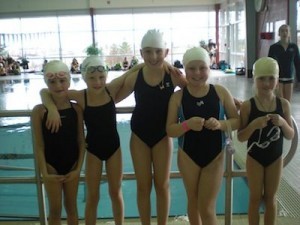 ARTSWIM 101: What is a figure meet?
ARTSWIM 101: What is a figure meet?
A “figures meet” simply means – “figures only”. Every competitive artistic swimming meet has two components to it: a “figures” portion, and a “routine” portion. Normally the total (or championship) scores for swimmers and teams are combined scores of figures and routine (50/50). However, at a “figures meet”, there are no choreographed artistic swimming routines. The swimmer is competing alone against other swimmers, and judges are measuring only one (but important) part of their artistic swimming skills.
“Figures” are the positions and transitions to new positions that every swimmer needs to learn, regardless of age or experience. Figures are grouped by “age group” and have a level of difficulty associated with them. There are eight figures for each age group, and each figure has a unique name – such as “porpoise”, or “sailboat”, or “ballet leg”. Swimmers work on these figures at every practice, and learn to control the speed, height, and posture of each one. It may take a couple of years for a swimmer to truly master a figure, and that is why age groups usually span two to three years, to allow plenty of time for skill development.
Every January Ontario Artistic Swimming holds the “Lisa Alexander Meet”. It is a provincial wide meet where all competitive swimmers can come together to test out their figure skills against competitors in their own age group. It is a great learning opportunity, and is often a “first meet” for many young swimmers new to competitive swimming.
To ensure that pre-competitive swimmers also have a chance to test out their skills and compete, there are a few Regional League Meets are held throughout the year.
In a figures meet, swimmers must wear black bathing suits and white caps. This provides a level of anonymity to the athletes, as one swimmer cannot be easily identified from another. The judges must focus purely on the skill of the figure, and assign a score. The swimmer is required to swim out in front of a “panel” of judges, and perform the figure alone. This may seem very stressful to the parents watching this process, but often they are surprised at the confidence of their swimmer who learns how to do this – and are always supported by their teammates!

